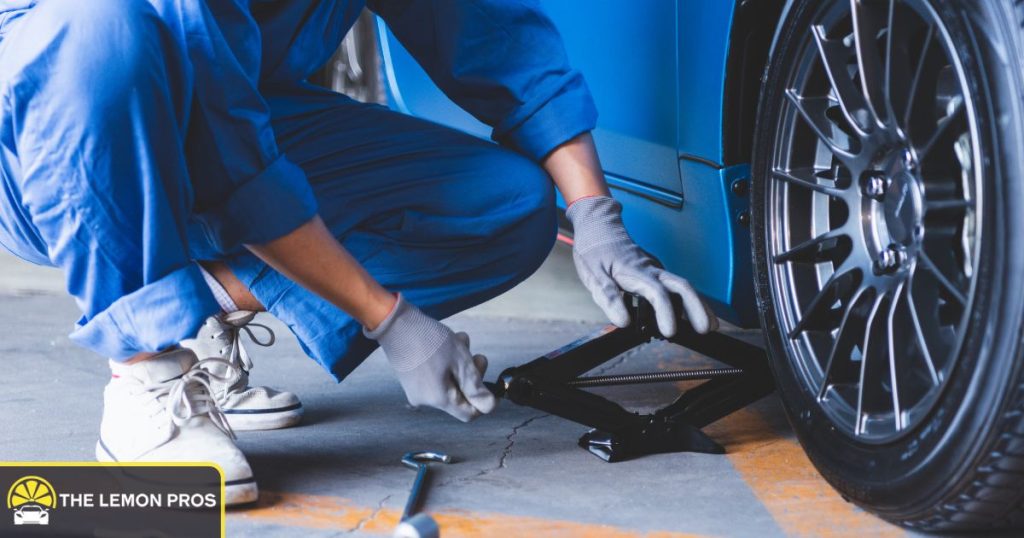
A bumper-to-bumper warranty covers nearly all the essential components of your vehicle, protecting you from unexpected repair costs. It typically includes everything from the engine and transmission to electrical systems, excluding normal wear-and-tear items. It’s known to be the most comprehensive coverage a manufacturer offers.
The Lemon Pros have become expert car warranty lawyers, navigating the ins and outs of coverage. If you’ve struggled getting repairs through your car warranty, it’s time to contact our team of attorneys for a free consultation.
In this guide, we provide a detailed analysis of the meaning and coverage of a factory warranty. We'll also discuss the good and bad sides of extended warranties, and give you advice on what to do if your warranty provider refuses to carry out necessary repairs.

A bumper-to-bumper warranty is vehicle coverage that protects almost every part of your car, from the front to the rear bumper. It covers repairs for defects in materials or workmanship, giving you peace of mind against unexpected issues.
Unlike a powertrain warranty, which only covers the engine, transmission, and drivetrain, a bumper-to-bumper warranty includes most other systems, like electrical, heating and cooling, and even some interior components. These warranties usually last between three to five years or 36,000 to 60,000 miles, though some manufacturers offer longer coverage.
While terms may vary by manufacturer, the average bumper-to-bumper warranty covers all of the main components. These components include:
This comprehensive warranty helps keep costly repairs from hitting your wallet unexpectedly.
While a bumper-to-bumper warranty covers most major systems, there are some things it doesn’t include. For example, routine maintenance is not included in the warranty. You will still be responsible for oil changes, tire rotations, and filters for your new car.
There’s also no coverage for wear-and-tear items. Some normal wear and tear items include tires, belts, brake pads, windshield wiper blades, and hoses. Cosmetic damage isn’t covered under the factory warranty. If there are paint chips, scratches, or upholstery items, you would have to pay for the repairs, as these are also seen as wear-and-tear.
Warranty coverage isn’t going to pay for repairs caused by accidents, neglect, or misuse. Additionally, it’s your responsibility to make sure any modifications or aftermarket parts are allowable by the manufacturer. While the Magnuson Moss Warranty Act ensures that the dealership can’t void your entire warranty because of these components, any failure directly related to them could lead to expensive repairs.

Car warranties are affected by the vehicle's age and mileage. For instance, a warranty may cover a vehicle for three years or 36,000 miles, but it’s discontinued once one of those milestones is met. You won’t get coverage for your two-year-old vehicle if it has 50,000 miles on the odometer.
There’s also a big difference between the manufacturer’s warranty versus an extended warranty provided by the dealer. Terms may be drastically different, and it’s important to read all of the limitations before you sign the paperwork.
Some regions may also have specific laws that affect what the warranty requires. For example, in California, all new cars must have an emissions warranty.
To maintain your warranty coverage, you must keep up with the recommended maintenance schedule and adhere to all rules regarding modifications or aftermarket parts. You must also ensure that the vehicle is only used as intended. Therefore, you can’t take your sedan off-roading and expect the warranty to pay for repairs.
If you are considering getting an extended plan, it's important to note that this would come into effect after the factory warranty expires. There are some pros and cons to keep in mind as you make your decision.
Yes, extended car warranties offer peace of mind and reduce the cost of major repairs. However, the extended warranty doesn’t cover everything. Also, you may end up paying more for coverage and the deductible than if you handled each repair bill as it came.
Before purchasing an extended warranty in California, do your homework. You want to choose a reputable provider and get the coverage required for your situation.

Even after multiple repair attempts, the same issue may recur. When this happens, the dealership may continue to repair the issue under the warranty, but you should always document the repeated failures. Because some defects can affect the safety, reliability, and value of the vehicle, it’s important to take action as soon as possible.
These persistent issues can lead to frustration and financial loss for the owner. Keeping detailed records of every visit and all the communication is essential, especially if the car qualifies for legal protection through Lemon Law.
If the defects can’t be repaired under the manufacturer’s warranty, it may qualify as a lemon. In California, a car qualifies under the Song-Beverly Consumer Warranty Act if it meets the following requirements:
While you could win a Lemon Law case without a lawyer, it’s never recommended. Most lawyers work on a contingency basis, meaning there’s no payment required unless you win the case. Therefore, there’s no reason to tackle the case on your own.
The manufacturer’s warranty covers most components from the front bumper to the back. It covers the major systems, such as the steering, suspension, and brakes, while also protecting small items, such as power windows, batteries, and the infotainment system. You want to read your warranty carefully to see what’s included and excluded. It’s also critical to know the expiration date, so you aren’t caught with any surprises.
You can trust the expertise of The Lemon Pros. Our team is regularly hailed as the best Lemon Law attorneys in California because we know how to get compensation for our clients. Contact us today for your free consultation.
Should you have further inquiries, we have answered some of the most common questions clients have regarding bumper-to-bumper warranty coverage.
The powertrain warranty is limited to the engine, transmission, and drivetrain. A bumper-to-bumper warranty is more comprehensive, covering most of the major systems. However, the powertrain warranty is typically longer than the bumper-to-bumper warranty.
In most cases, the bumper-to-bumper warranty doesn’t cover cosmetic issues, such as rust on body panels or corroded paint. It also doesn’t cover normal wear-and-tear, damage caused by accidents, and failure due to aftermarket modifications. Read your warranty carefully to see what’s excluded.
New cars have both a bumper-to-bumper warranty and a powertrain warranty, so the engine is covered. If you have an extended bumper-to-bumper warranty, the engine may also be included, but you would need to read the service contract.
Hyundai is known for having “America’s Best Car Warranty.” The bumper-to-bumper coverage lasts five years or 60,000 miles, while the powertrain coverage is for ten years or 100,000 miles. This warranty is the same for Kia, Genesis, and Mitsubishi brand vehicles as well.
If you drive a new car or truck, the bumper-to-bumper warranty is at least three years or 36,000 miles, although some manufacturers offer longer. You can extend that coverage through the manufacturer or choose a third-party provider.
To make a claim, contact your dealership or an authorized repair center and provide your warranty details. Bring maintenance records, as proof of proper care may be required. If the repair is approved, the work is done at no cost for covered parts and labor.
Yes, some bumper-to-bumper warranties can cover used cars, but usually only if the car is still within the original factory warranty period. Many manufacturers also offer certified pre-owned (CPO) programs, which include a shorter bumper-to-bumper warranty extension. For non-CPO used cars, you’d need to buy an extended warranty or protection plan for similar coverage.
Owners can make modifications to a vehicle without voiding the warranty, as long as the aftermarket parts don’t create issues. However, if the vehicle still has a loan or is leased, there may be stipulations against modifications that you should know about before proceeding.
If you anticipate car repairs in the future, the extended warranty may save you money. However, if you drive a reliable, newer car, you may be spending extra money for the coverage than what you need. Paying for the repairs out of pocket may be cheaper in the long run.
You can pay the price for an extended warranty and continue coverage. These are often available through the manufacturer of the car and third-party providers. Otherwise, you could choose to cover the cost of future repairs out of pocket.
Phone: (855) 725-2446
Email: info@thelemonpros.com
We have an excellent success record in representing consumers just like you! We are award winning attorneys, but that has not gotten to our heads. We are attorneys who care and give personalized attention to each and every client, our attorneys directly handle your claim.

© Lemon Pros © 2025. All rights reserved.
Powered by GLP Marketing
